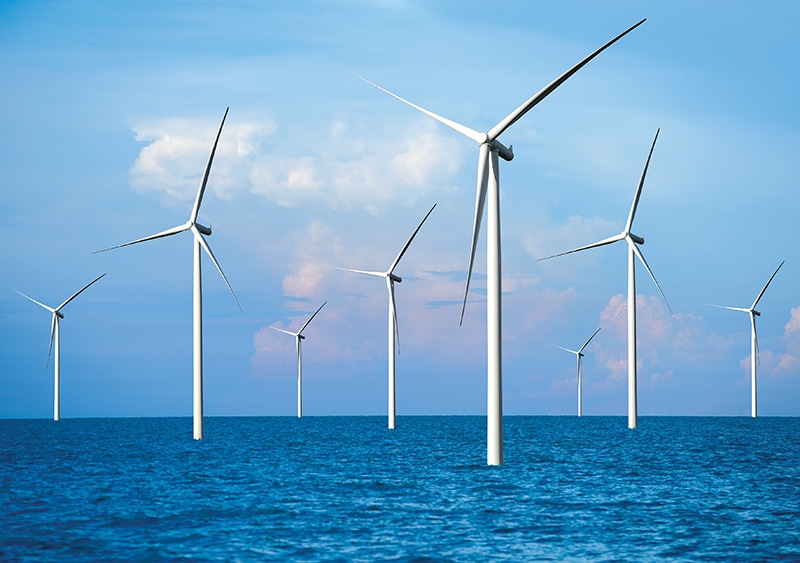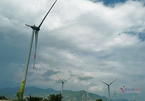argue several international energy experts, with the right government policies needed to be implemented quickly to follow through with the country’s energy development schedule.
 |
|
Conditions in place for offshore development, illustration photo
|
Refrigeration Electrical Engineering Corporation (REE) is planning to work with foreign investors to pilot an offshore wind power project with a total capacity of about 2,000-3,000MW, according to chairman Nguyen Thanh Mai at the company’s annual general shareholders’ meeting on March 30.
Electricity being in short supply and the future increase in selling price while coal and oil power sources pollute the environment were cited as the core factors by Mai to convince REE’s shareholders to invest in the company’s new project. She hopes to get a “good price when investment costs fall to about 10 US cents per kilowatt-hour and offshore wind prices will be at 11 US cents per kWh.”
Mai said that the current technology allows for offshore wind power projects with poles tens of metres high. An offshore wind speed of about 10m per second could then operate a 10-17MW turbine. However, the current situation of wind power development in Vietnam, as well as the risks that investors may face, was not discussed.
Capacity higher than target
The combination of strong winds, shallow water, and skilled workers is an ideal condition for Vietnam to develop offshore wind power. According to data from the Energy Conservation Research and Development Center (ENERTEAM) under the Department of Science and Technology of Ho Chi Minh City, 11 provinces have developed separate plans for wind power, including Thai Binh, Quang Tri, Ninh Thuan, Binh Thuan, and Dak Lak.
Tran Quang Cu, an expert of ENERTEAM, found that the total planned installed wind power capacity of these 11 provinces was “much higher than the national target”, about 2,600MW by 2020 compared to 800MW; and about 15,700MW by 2030 compared to 6,000MW for the whole country.
Cu realised that when funding wind power in this country, many investors encounter various problems related to the appraisal process, project approval time, and access to preferential credit capital from the state or official development assistance, while high investment rates would also lead to a long payback period.
Currently, 91 wind power projects with a total installed capacity of about 7,000MW have been added to the national wind power plan, and 250 projects, accounting for around 45,000MW, are waiting to be added to the plan.
Power purchase agreements (PPAs), according to Cu, are still a barrier to the development of wind power. As of June last year, about 31 projects have had PPAs with Electricity of Vietnam (EVN) with a total capacity of 1,662MW expected to be put into operation in the 2020-2021 period. If on time, by the end of 2021, the total installed capacity of wind power could amount to around 2,200MW, reaching 36 per cent of the planned target by 2025.
Under the current PPA, EVN is exempt from payment obligations, even when it is unable to receive electricity to the grid due to a transmission or distribution network failure of EVN. But Cu said that up to now, there is no “penalty mechanism in Vietnam if EVN does not receive electricity even if the state-owned company does not cooperate to implement it”.
Ideal conditions
Cooperative research from Vietnam, Ireland, and Japan has used statistical models to show that the annual average wind speed at 100m height can reach around 9-10m per second in many of Vietnam’s coastal areas.
The study also showed that energy density is equally large in some areas of the south-central coast and the Gulf of Tonkin and reaches capacities of over 50GWh per square kilometre per year. Only in the waters around Phu Quy or Bach Long Vi islands, the potential for the installed capacity could be around 38GW each, with the technical potential within a range of 185km from the shore on the territorial sea reaching 500-600GW or more.
According to the International Energy Agency, Vietnam could become one of the major offshore wind power centres in Southeast Asia. Data from the Ministry of Industry and Trade as of last September showed that the country had a total of 67 promising nearshore power projects, with a capacity of nearly 10GW and 14 offshore wind power projects with a capacity of nearly 30GW, which means that the total number of upcoming projects will be around 40GW.
The development of intertidal and nearshore wind power in Vietnam has been driven by government policies, including feed-in tariffs. However, at the moment, there is no official definition or specific policy for offshore wind power projects in Vietnam.
Up to now, no offshore wind farm has been established in Vietnam. The country is in the early stages of offshore development, and projects focus on coastal and intertidal or nearshore areas that are easier to invest in and come with shorter development periods. Developers are calling on the government to secure the industry, which will allow them to invest. The government can do this by setting offshore wind power goals as well as a dedicated offshore wind policy.
Given the existing conditions, Vietnam can benefit from a complete supply chain in Asia including wind power developing markets such as Taiwan, Japan, China, and South Korea – which is an important factor to reduce investment costs.
Dinh Van Nguyen, project head of Offshore Renewable Energy Development at Cork University’s SFI Research Centre for Energy, Climate, and Marine in Ireland, said that strong offshore winds are an important point to consider following Vietnam’s demand for electricity.
The country plans to upgrade 5-10GW of new offshore wind capacity by 2030 and 35-70GW by 2050. Nguyen believed this process needs to begin right away because it will take 5-10 years for design, planning, and construction.
To reduce capital costs, Nguyen said the government should encourage financial measures including “the participation of multilateral lenders and the adoption of green standards. The government should also consult international lenders and investors to determine suitable solutions.”
|
The prime minister and the Ministry of Industry and Trade (MoIT) in 2019 agreed to allow Enterprize Energy group to study and survey the Thang Long offshore wind power project in the central province of Binh Thuan with a capacity of 3,400MW and the total investment capital of around $11.9 billion. However, so far this project is still in the appraisal process by the MoIT. The investment in offshore wind power projects is in line with the development orientation of renewable energy sources of Binh Thuan People’s Committee. The Thang Long project will be financed to about 70-75 per cent by loans, with the remainder being the company’s equity. However, realising a loan of more than $8 billion will not be easy as investment in renewable energy is still facing many difficulties. Investors need to consider costs that will increase due to many factors arising in the construction process. The arrangement of loans mainly comes from foreign banks. In addition, financing arrangements for clean power projects in Vietnam are still facing problems with power purchase agreements. Although such contracts stipulate arbitration, investors and international banks will want to comply with international practices. |
VIR

Wind power: investors wait for PM’s decision on Feed-in-Tariff price
The Feed in Tariff (FIT) price of VND2,000 per kwh will expire in seven months, but the price for the next period has not been fixed yet.